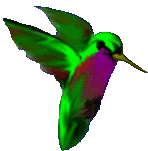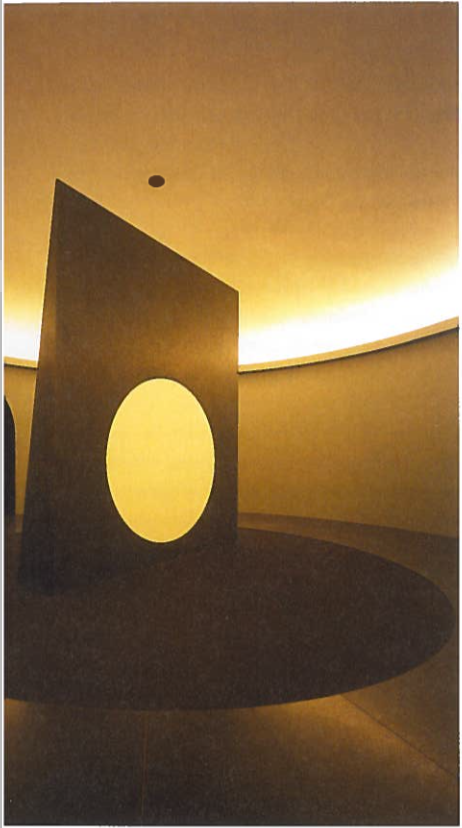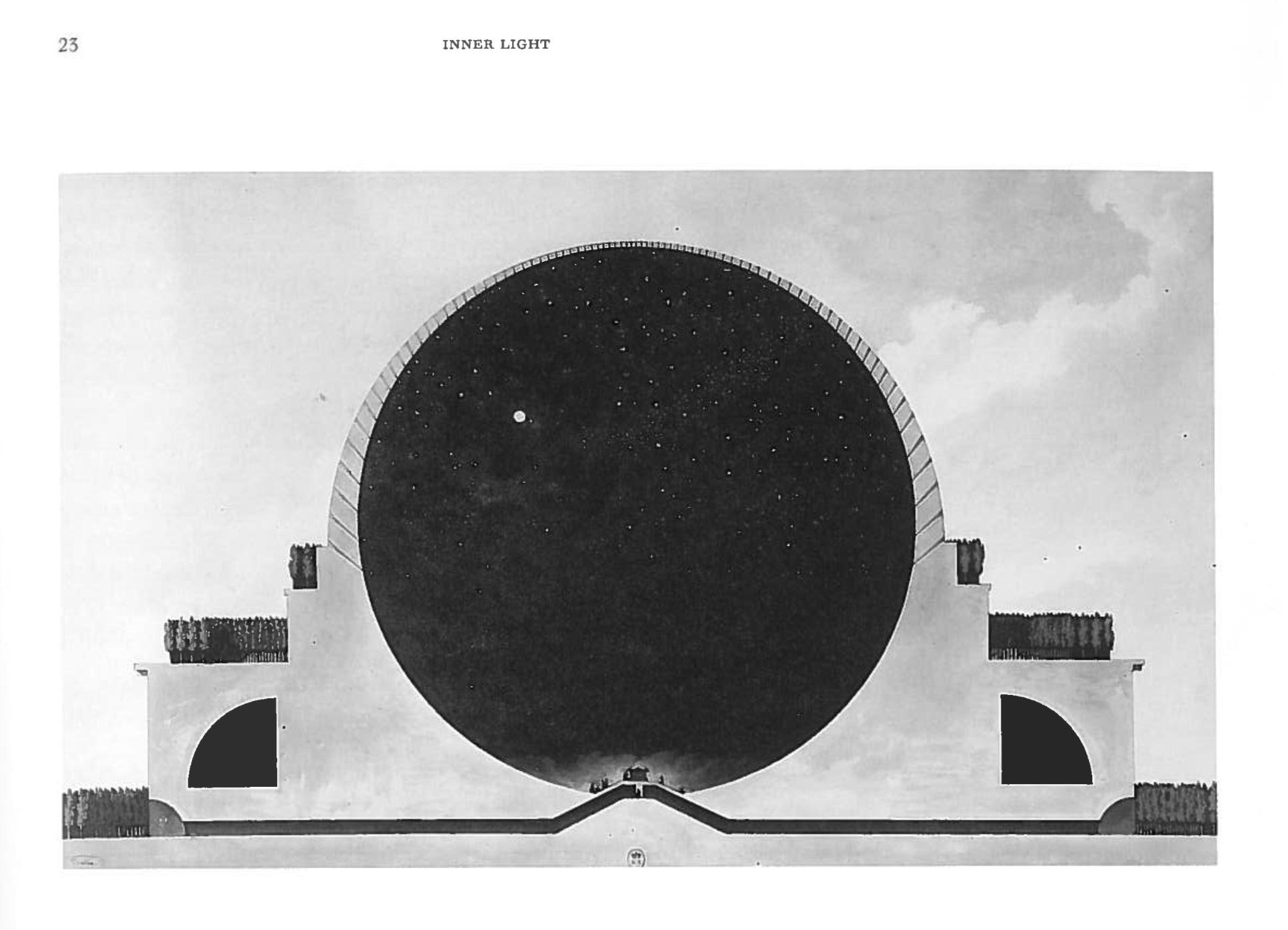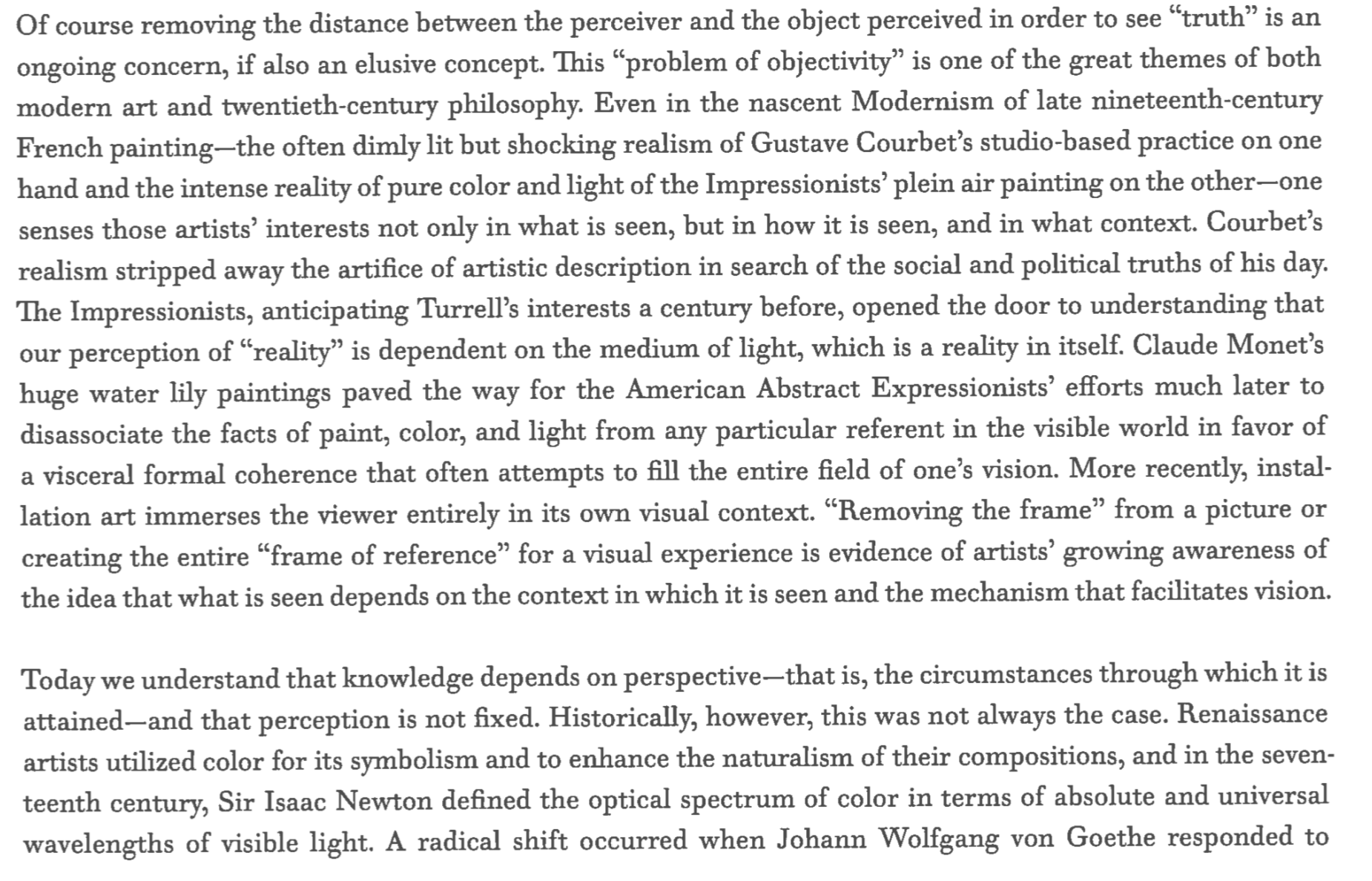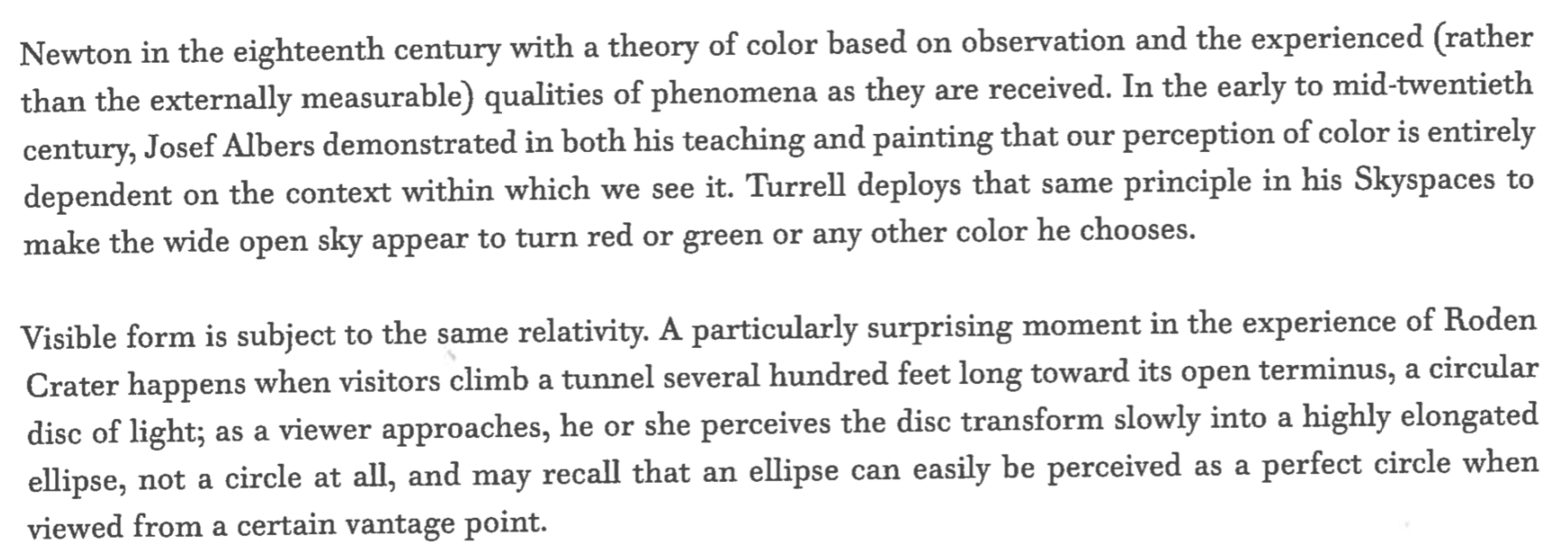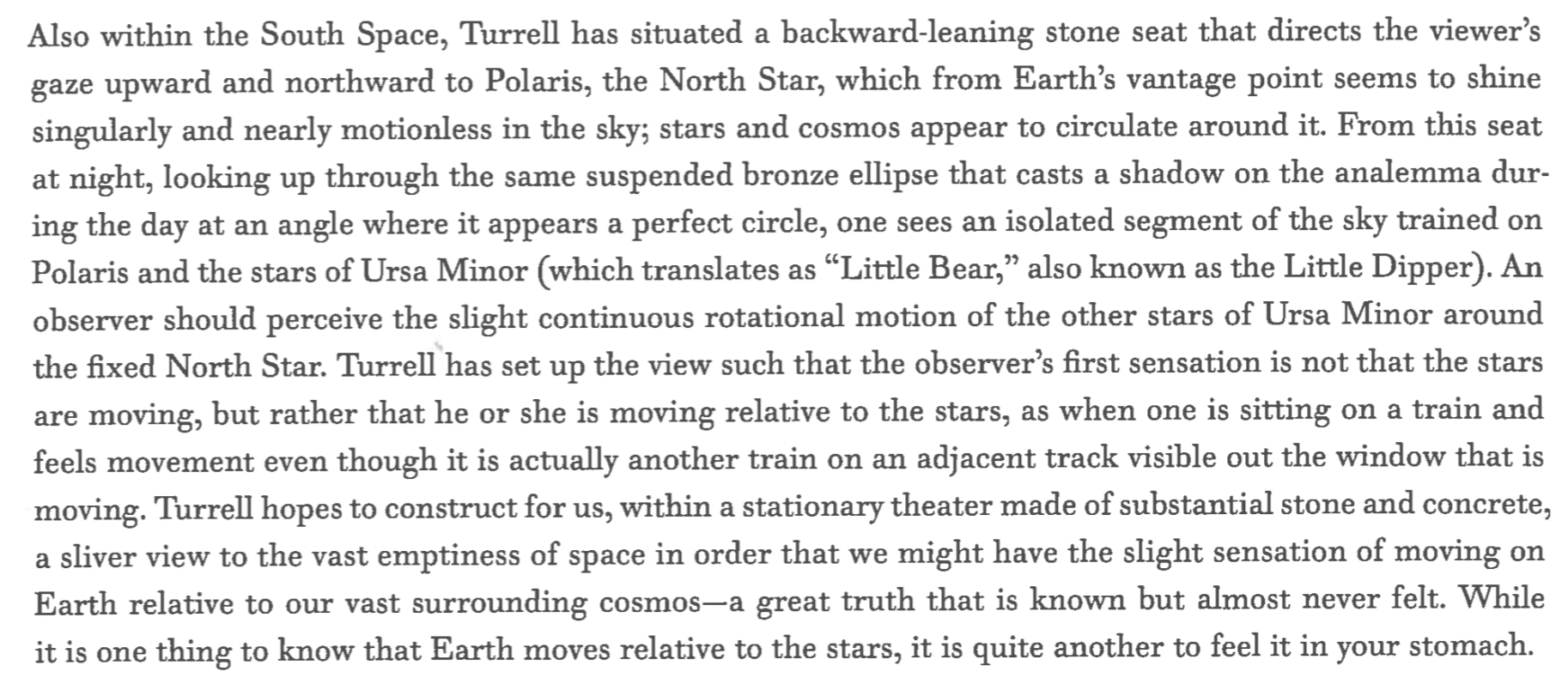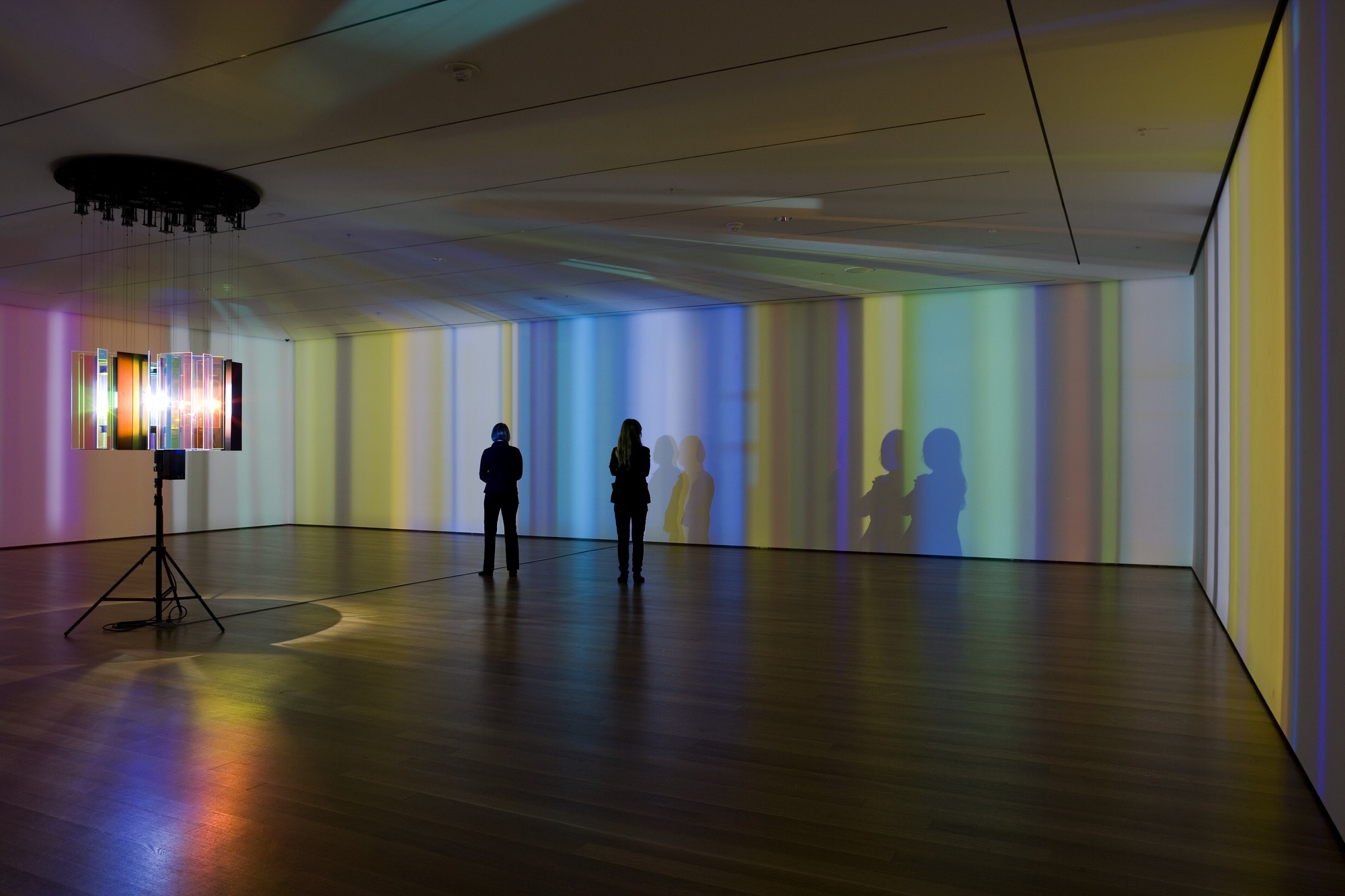Day 158 @ ITP: Recurring Concepts in Art
Reading:
Techniques of the Observer
Jonathan Crary
Day 158 @ ITP: Recurring Concepts in Art
Day 157 @ ITP: Thinking about Algorithmic Composition + LIPP
2/9
I was thinking it could be fun to somehow very specifically link up notes and colors. I don't know how easy that is to accomplish. Something like this below video that I found:
It seems to be mapping the sounds very specifically with the colors. So it is not triggering them through analyzing the sounds on the other end, but rather triggering an associated visual every time a sound is played... So it's not so much audio reactive but "input reactive".. Would it be possible to have a slightly different visual for a range of up to ~127 individual inputs?
I also would like to somehow trigger light in or on crystal singing bowls when they are played... possibly with projection mapping? Or, the bowls could also turn on a physical light inside them when I hit them with a mallet (though it might make the bowls vibrate sonically to have a light inside them, so would have to think of a way to do it that wouldn't affect the sound). But that would be a different scenario...maybe in tandem with the algorithmically generated music and visuals which are responding to the notes. Possibly the bowls could also be affecting the projections so there is a symbiosis there as well. Here is an example of someone doing something similar (but with lights that change color, and without turning off):
Update 2/12 (for LIPP)
I have been reading a lot and thinking about the kinds of systems that I would like to work on in general and using the tools in our class.
I am definitely very influenced at the moment by the Light and Space artists I am reading about for Recurring Concepts in Art, and installations by James Turrell and others who work with perception. I would like to create something in this school or vein but also with incorporating sound, and slowly fading in between a series of "places" that create an arc of experience. So the key word is "slow" - but constantly moving and shifting, maybe with some central focus point that could also have elements be introduced or taken away or faded away rather than flashing in and out which seems to be what a lot of video effects are about...
I also realize that a lot of figuring this out will also be from raw experimentation, and I still need to do a lot more of that. I have been following the tutorial videos for our class but have not worked much more on my own Max patch yet(!), but plan to really get into it over the next two weeks. I still need to work more with the jit.smooth function, I tried to add it but it turned orange, so I was wondering if we could go over this in my office hours appt with you (this Friday from 2:40-3pm)?
I attended two live audio-visual performances this past week, the one at 3 Legged Dog last Saturday, and one this past Saturday as well at Spectrum in Brooklyn which I was also playing music in, where a video artist did live visuals for each of the 4 acts, and I was wondering if I could do a review of some kind of amalgamation of a few sets from different shows instead of just one event. Other than being a little stuck with Max at the moment I have been feeling inspired by various things in relation to our class!
Bobst library stacks w/ jit.lumakey tutorial
Day 152: Recurring Concepts in Art
Reading:
Art and Telematics: towards a network consciousness
Roy Ascott
Day 152: Recurring Concepts in Art
Reading:
How the Art of Social Practice Is Changing the World, One Row House at a Time
Carolyn A. Miranda
This type of art of the encounter, frequently referred to as “social practice,” has been having a moment in art circles—albeit a moment that dates back a couple of decades. In that time, artists such as Rick Lowe in Houston and Theaster Gates in Chicago have turned urban renewal into an art form, transforming abandoned buildings into thriving cultural hubs. In Detroit, the Museum of Contemporary Art harbors Mobile Homestead, one of Mike Kelley’s final works, a near-exact replica of his childhood home, which now serves as an ever-evolving community center.
Certainly, the notion of participatory art is not new. The Surrealists were staging hands-on events in Paris almost a century ago. In the 1950s and ’60s, figures like Allan Kaprow and members of Fluxus were turning collective actions into art. The ’70s provided all manner of boundary-blurring social projects: from Miriam Schapiro and Judy Chicago’s Womanhouse in Los Angeles—which was part art installation, part educational facility, part performance space—to Mierle Laderman Ukeles’s pieces involving workers at the New York City Department of Sanitation. (She remains an artist in residence there to this day.) All of these traditions, and many others, have made their way into social practice, a stream of participatory art that tends to display a strong sociological and political bent, often in an effort to draw attention to social ills and conditions. Sometimes, these projects are meant to incite empowerment or change in a community.
Tom Finkelpearl is the author of What We Made: Conversations on Art and Social Cooperation, published last year by Duke University Press. He is also director of the Queens Museum in New York, which sponsored, along with the public-art nonprofit Creative Time, Tania Bruguera’s Immigrant Movement International, a piece begun in 2010 that resulted in the creation of a community center for immigrants in Corona, Queens. Finkelpearl defines social practice as “art that’s socially engaged, where the social interaction is at some level the art.”
He thinks that the popularity of social practice among today’s artists reflects a pendulum swing away from the art market. “It’s a reaction against the excesses of individualism,” he says. Indeed, with its ephemeral gatherings and activist happenings, social practice generally produces little in the way of salable objects. (Of the artists mentioned in this story, a slim minority have gallery representation, such as Hirschhorn and Gates, who show at Gladstone Gallery in New York and White Cube in London, respectively.)
Nato Thompson, chief curator of Creative Time, thinks that the form is a byproduct of our technology-reliant times. “I mean, doesn’t any kind of human interaction that isn’t on the Internet just feel very special?” he asks. Last fall, Creative Time and the Brooklyn Museum staged Suzanne Lacy’s Between the Door and the Street, in which 400 mostly female participants decked out in lemon-yellow scarves took over a brownstone-lined block in Brooklyn to discuss issues of gender, race, and class with passersby.
Ted Purves, who founded the program at CCA, explains that these courses emerged out of pedagogical necessity. “If you’re interested in doing work out in the world, you need another box of tools,” he says—tools that go beyond studio practice and art history. “You need classes on social theory, theories of politics, and theories of public space.”
Helguera’s interest in such interactive scenarios emerges from his own artwork. Last year, he created a crowd-sourced Spanish-language bookstore called Librería Donceles at Kent Fine Art in Chelsea, which became an impromptu hangout for Spanish speakers in a city without a dedicated Spanish-language used bookstore. Last month, the project traveled to Phoenix, where it was installed inside a defunct Borders bookshop under the auspices of Arizona State University. “We spend years in art school, where we are taught to explore ourselves,” Helguera says, “but social practice is completely about the opposite thing. It’s about how to listen. It’s remaining engaged with the world in an active way.”
...Caledonia Dance Curry is an artist based in Brooklyn. In some quarters, she is better known as Swoon, a moniker she adopted as a street artist in the late ’90s. Swoon has done intricate cut-paper installations in galleries and collaborated on a series of sculptural rafts that have navigated the waterways of Mississippi, New York, and Venice. A few years ago, she and a team of artists helped build sturdy Superadobe shelters and a community center in earthquake-ravaged Cormiers, Haiti. Currently, the group is in the Rust Belt town of Braddock, Pennsylvania, where they are rehabilitating an abandoned church.
“We’re trying to think about how we can regenerate this space so that the narrative isn’t simply about destruction,” Swoon says. To help do that, the group is building a kiln that will fire the bright ceramic tiles that will one day cover the roof—tiles the community will have a hand in making. “It’s not that different from my previous work,” she adds. “My question to myself as an artist has always been, ‘How do I make something that engages my city—that creates art where people don’t expect to find to it? And how can we change what’s valued and how we value it?’” Art is a universe that traffics in these symbols, which means social practice should feel right at home.
Day 152: Recurring Concepts in Art
Reading:
“The New Visual Literature”: László Moholy-Nagy’s Painting, Photography, Film
PEPPER STETLER
Jonathan Crary’s important work, which acknowledges the problem of isolating vision as an autonomous area of study. Crary points out that perception is not exclusively a visual faculty but involves a multisensory involvement with the external world. He argues that a scholarly approach that separates vision from broader perceptual processes—sound and touch, for example—internalizes modernity’s fragmentation and fracturing of the body into isolated and thus controllable sensory experiences.
In the first section of Painting, Photography, Film, Moholy-Nagy resolves that our eyes can no longer be a reliable source of perception.6 In an unabashedly technophilic tone, he declares the human body and especially the human eyes to be ill-suited for direct interaction with the quick pace and simultaneity of the modern world. These new conditions of perception demand that photography be used as a supplement to our own inadequate and atrophied visual facilities.
Photography reveals “existences, which are not perceptible or recordable with our optical instrument, the eye,” and that only “can be made visible with the help of photography.”7 Better equipped to process the visual stimuli of the modern world than the human eye, photography “can complete our optical apparatus.”
Moholy-Nagy argues that not only is photography able to show us things never before seen, but it also represents a mode of perception that is separate from our habitual desire to decipher what we see through association and memory. Because photography stands in opposition to conventional vision, showing us that which is unfamiliar to our eyes, it offers a chance for perception in its purest and most immediate form, freed completely from associations with the past.
His insistence on purity has more to do with photography’s isolation from our instinct to assimilate what we perceive through memory than with the dissociation of vision from other bodily senses. As we will see, Painting, Photography, Film’s photographic material incites an interaction of the senses—sight, sound, and touch in particular—and thereby stages a form of perception based on instinctual response rather than habit and experience.
The sources of Painting, Photography, Film’s photographs are typed in a chart on the book’s last pages, and the sprawling list records an over- whelming variety of subjects: photograms, X-rays, microscopic views of plants, close-ups of animals and machinery, photographs of stars and lightning, a bird’s eye view of St. Paul’s Cathedral in London, a worm’s eye view of a factory tower, photomontages, split-second exposures and time-delayed images. The sequence presents views and suggests connections to which Moholy-Nagy’s audience in the 1920s was unaccustomed, a Weltanschauung determined by the productive possi- bilities of photography and not yet assimilable through association or memory.
He comments earlier in the book, in regard to photography’s enhancement of the eye, that “some scientific studies, the study of movement (stride, leap, gallop) and the magnification of zoological, botanical and mineral forms, and other scientific research” have made use of photography’s expansion of visual capabilities.23 By including images of scientific study, Moholy-Nagy associates his theory of photographic perception with scientific objectivity and technological advancement.
Performing an early form of multi- tasking, Stone shows how the filing cabinet was far from a means of calm control over the important documents of the modern professional. Rather, it contributed to the “absolute triumph of technology over space and time,” which allows for the accomplishment of several tasks concurrently.58 The filing cabinet also implies a form of attention associated with the modern office worker that is born from a state of distraction. Reading information in a filing cabinet involves visually locating symbols or letters that will guide the viewer to the location of desired information. It is also a practice quite similar to Moholy-Nagy’s description of his search for “good” photographs within the overwhelming quantity of images in the illustrated press— and the intensified form of this practice created by Painting, Photography, Film. These practices entail the fragmentation of the visual field and require the viewing subject to actively sort information into the categories of what is sought and what can be left to the overwhelming field of stimuli. Thus the modern visualization of reading demands the active synthesis of information within a space of potential overstimulation.
Weeding through the information in the file cabinet requires fingers to do the seeing, separating and pointing out the information sought once it is found. At the same time, Stone has the telephone pressed to his ear. Circles radiate like sound waves outward from the phone’s base sitting on the nearby desk. Each wave is accompanied by lines of text shaped to its circular form, making visible what is being said through this otherwise invisible medium. The text transcribes notes about various appointments and conferences: “7:45 telephone with Klara,” “5:45 visit with lawyer.” The fragmentation of information into shortened forms of text allows for the more efficient and productive accomplishment of everyday tasks. Stone stages a competition between various forms of attention but appears to be able to attend to all senses—sound, vision, and touch—with equal care.
Moholy-Nagy describes a form of collection and storage that, like Stone’s filing cabinet, means to organize an abundance of visual information:Such [mechanically produced] images will naturally not be kept as they are today like lifeless room decorations, but rather in compartments on shelves or “domestic picture galleries” [Haus-Pinakothek] and brought out only when they are really needed. . . . Just as today we store the film spools for private cinematographs in a cupboard in the home.59
Day 150: Recurring Concepts in Art
Week 3
Reading:
TAKE YOUR TIME: A CONVERSATION
Olafur Eliasson and Robert Irwin
Image from Olafur Elisson : Take Your Time exhibition, MoMA, 2008
Source: https://www.moma.org/calendar/exhibitions/31?locale=en#installation-images
Olafur Elisson : Take Your Time exhibition, MoMA, 2008
Source: https://www.moma.org/calendar/exhibitions/31?locale=en#installation-images
Robert Irwin installation view
